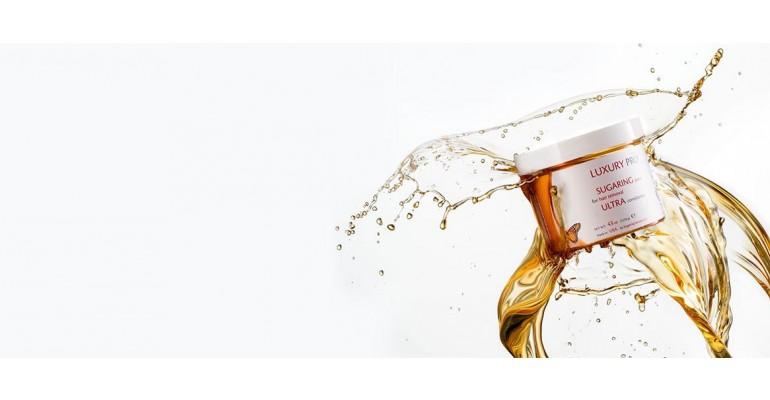
How to Get Rid of Ingrown Hair
Table of Contents
- Introduction
- What Causes Ingrown Hair?
- Symptoms of Ingrown Hair
- Types of Ingrown Hair
- How to Diagnose Ingrown Hair
- How to Get Rid of Ingrown Hair
- Prevention Techniques
- Living With Ingrown Hair
- FAQs
Introduction
Ingrown hairs occur when a strand of hair grows back into your skin instead of outward. They often appear after shaving, waxing, or tweezing and can cause discomfort, irritation, or even infection. Common areas affected include the face, legs, armpits, and pubic region.
What Causes Ingrown Hair?
Ingrown hairs are caused by hair strands curling back into the skin during regrowth. This can occur due to:
- Shaving against the grain of hair growth.
- Using blunt or multi-blade razors.
- Tight clothing causing friction.
- Thick, coarse, or curly hair types.

Noticeable Symptoms of Ingrown Hair
Common symptoms include:
- Red spots resembling pimples
- Discomfort or itchiness in the area
- Visible hair trapped under the skin
- Small bumps on the skin surface
| Symptoms | Description |
|---|---|
| Red pimples | Early signs of ingrown hair |
| Itchiness/discomfort | The area feels uncomfortable |
| Small bumps | Raised area indicating trapped hair |
Types of Ingrown Hair

There are two main types:
- Superficial Ingrown Hair:
- Hair grows slightly under the skin, often resolving on its own.
- May cause minor inflammation and a small pustule.
- Pigmented spots might appear but fade over time.
- Deep Ingrown Hair:
- Hair penetrates deeper skin layers, often spiral-shaped.
- Can cause abscesses, scarring, and pigmentation.
- Requires professional medical intervention.
How to Diagnose Ingrown Hair
Ingrown hairs are usually self-diagnosable, but a healthcare provider can confirm the condition during a physical exam. They may ask about your shaving habits, skincare routine, and the frequency of symptoms.
How to Get Rid of Ingrown Hair
At-Home Treatments
- Apply warm compresses to affected areas for 10–15 minutes to open pores.
- Gently exfoliate using circular motions with a washcloth or exfoliating brush.
- Use sterilized tweezers to carefully lift ingrown hairs that are visible on the surface.
Medications
- Antibiotic ointments to treat infections.
- Retinoids to remove dead skin and unclog pores.
- Steroid creams to reduce inflammation and swelling.
Professional Treatments
- Laser Hair Removal: Uses heat to destroy hair follicles, preventing regrowth.
- Electrolysis: Permanently removes hair by destroying hair roots with a mild electrical current.
Sugaring and Other Viable Solutions for Ingrown Hair Removal
It is crucial that a specialist performs the removal when it is not possible for you to do it yourself. Leaving it unattended can lead to infection. Before visiting a cosmetologist, there are several effective methods you can use to get rid of an ingrown hair bump without additional help. Some popular and effective methods are:
- Steam. This option can help you get rid of ingrown hair from waxing or shaving. Steam the skin and lightly scrub it to remove the old layer.

- Special Tools. Using tweezers and sanitizer, begin pulling out ingrown hair in a single movement. This procedure requires patience as it can take quite a long time.

- Surgical. In more serious situations, when an ingrown hair becomes infected, it is dangerous to use the previous method. Only a well-trained specialist can help you heal infected ingrown hair.
- Cosmetological. This method includes sugaring and laser removal. These procedures are performed when there is no active inflammation or suppuration. Only a cosmetologist can perform them. If you have ingrown hairs on the epidermis of your face, these procedures can be used to carefully remove them without causing any scarring.

What is sugaring? It is one of the most beneficial hair-removal methods, and it has almost no side effects. All you need is to purchase a sugar paste, like Luxury Pro, and rely on the hands of a professional master in a beauty salon. It prevents ingrown hairs and gives you smooth skin without any bumps. It can work on the pubic area or other body parts, but it is highly difficult to perform on the face.
When to Seek Medical Help
If you notice signs of infection, such as pus, severe pain, or persistent bumps, consult a healthcare provider.
Prevention Techniques
- Shave in the direction of hair growth.
- Use warm water and shaving gel to soften the skin.
- Exfoliate regularly to remove dead skin cells.
- Avoid tight clothing that causes friction.
- Consider alternative hair removal methods, such as sugaring or depilatory creams.
How to Minimize the Chance of Getting an Ingrown Hair
It is highly advisable to take some preventative measures to avoid the issue. That is why we recommend several techniques to tackle the problem.
- New Hair Removal Methods. To avoid getting ingrown hairs, consider changing the way you remove unwanted hair in the first place. Try sugaring, for example. It is one of the safest methods; it leaves no bumps and won’t cause an allergic reaction if performed by professionals with high-quality paste.
- Apply Proper Skin Care. Another great solution is to moisturize before you start epilation. This makes the hairs softer so you can remove them more easily. Also, do not forget to exfoliate regularly. This allows you to cleanse the pores and remove the older layers of skin, so new hairs will have no obstacles and will continue their growth in the right direction.
- Stop Wearing Tight Syntactical Clothes. The pressure caused by tight fabric can also prevent normal regrowth. Therefore, if the issue is acute, it is better to reconsider your wardrobe.
- Rely on the Professionals. Going to a proper cosmetologist will save your skin and perhaps even your purse. You may opt for photo epilation or laser hair removal, or even sugaring, which is currently one of the preferred solutions to get rid of unwanted body hair and minimize the chances of getting ingrown hairs afterward.
The procedure reduces the risk of damaging the skin. The professional will apply a sugaring paste to the area and pull it off in the direction of growth after it dries.
If after all that a problem of ingrown hair is still not solved, we recommend you to use a help of a dermatologist.
Living With Ingrown Hair
To manage recurring ingrown hairs, adopt a consistent skincare routine that includes gentle exfoliation and moisturizing. Seek professional advice for chronic or severe cases to avoid complications like scarring or infection.
FAQs
How do you get rid of an ingrown hair fast?
Apply a warm compress to soften the skin, then gently exfoliate or use sterilized tweezers to lift the hair.
Do ingrown hairs ever go away on their own?
Yes, superficial ingrown hairs often resolve without treatment within 1–2 weeks. However, infected cases may require medical intervention.
Can you pop an ingrown hair out?
It’s not recommended to pop an ingrown hair as it can lead to infection. Instead, gently lift it with sterilized tools.
How do you bring an ingrown hair to the surface?
Exfoliate the area and apply a warm compress to encourage the hair to emerge naturally.


 Cart
Cart 